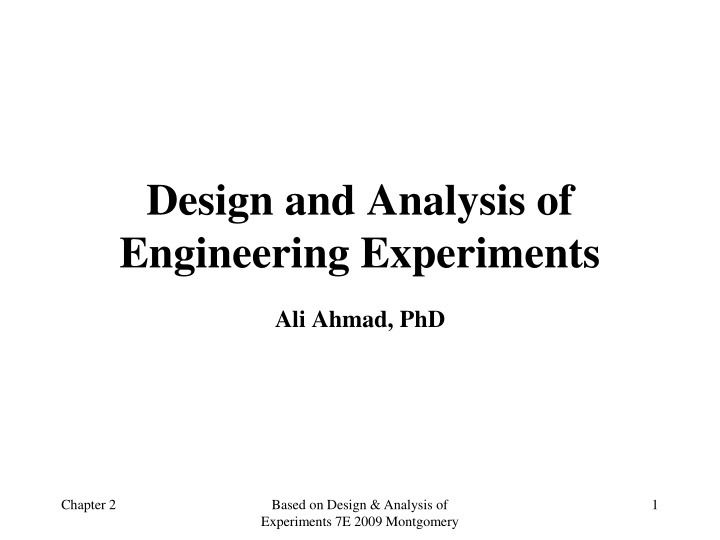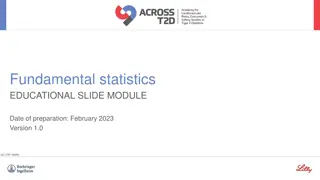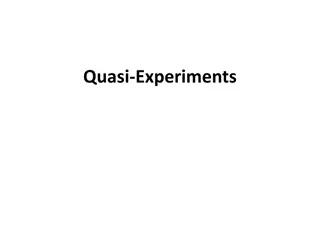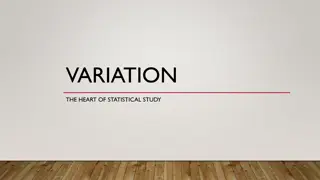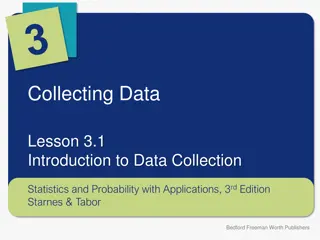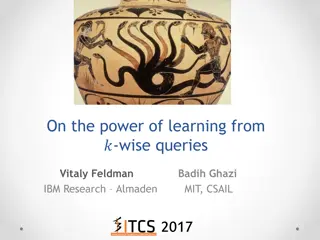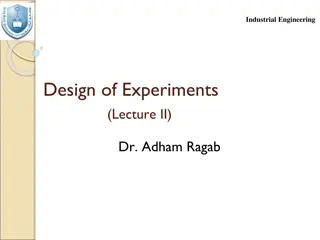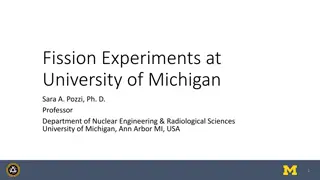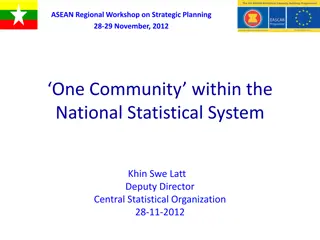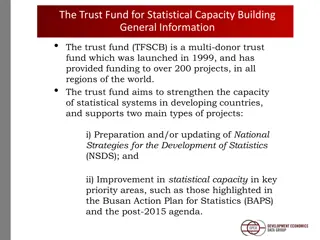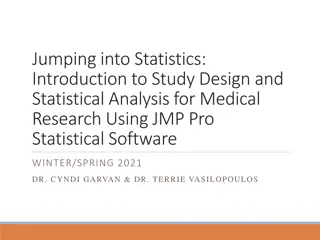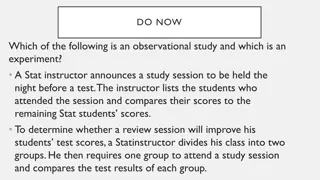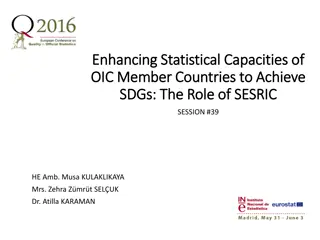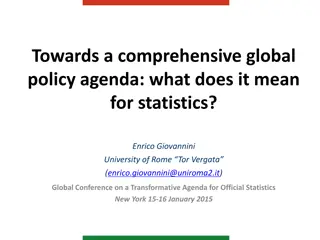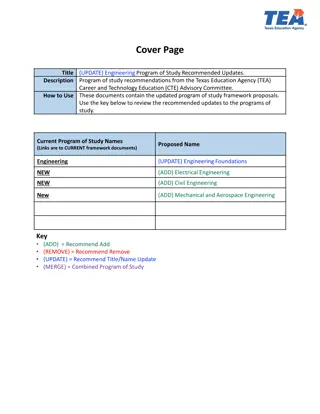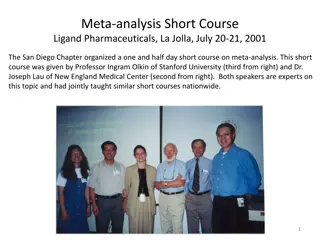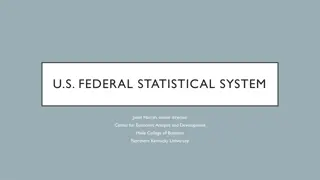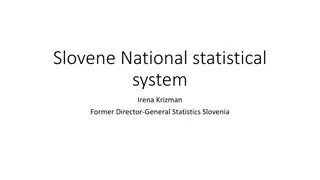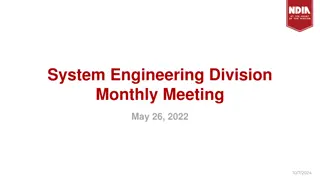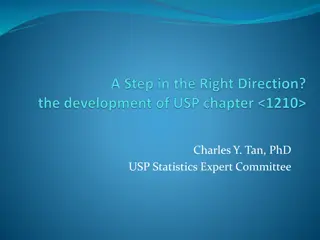Basic Statistical Methods in Engineering Experiments
This chapter delves into fundamental statistical methods crucial for engineering experiments, covering topics such as sample data description, populations versus samples, hypothesis testing, two-sample t-test, parameter estimation, and more. With graphical illustrations and explanations, it provides insights into analyzing and interpreting experimental data effectively.
Download Presentation

Please find below an Image/Link to download the presentation.
The content on the website is provided AS IS for your information and personal use only. It may not be sold, licensed, or shared on other websites without obtaining consent from the author.If you encounter any issues during the download, it is possible that the publisher has removed the file from their server.
You are allowed to download the files provided on this website for personal or commercial use, subject to the condition that they are used lawfully. All files are the property of their respective owners.
The content on the website is provided AS IS for your information and personal use only. It may not be sold, licensed, or shared on other websites without obtaining consent from the author.
E N D
Presentation Transcript
Design and Analysis of Engineering Experiments Ali Ahmad, PhD Chapter 2 Based on Design & Analysis of Experiments 7E 2009 Montgomery 1
Chapter 2 Basic Statistical Methods Describing sample data Random samples Sample mean, variance, standard deviation Populations versus samples Population mean, variance, standard deviation Estimating parameters Simple comparative experiments The hypothesis testing framework The two-sample t-test Checking assumptions, validity Chapter 2 Design & Analysis of Experiments 7E 2009 Montgomery 2
Portland Cement Formulation (page 24) Chapter 2 Design & Analysis of Experiments 7E 2009 Montgomery 3
Graphical View of the Data Dot Diagram, Fig. 2.1, pp. 24 Chapter 2 Design & Analysis of Experiments 7E 2009 Montgomery 4
If you have a large sample, a histogram may be useful Chapter 2 Design & Analysis of Experiments 7E 2009 Montgomery 5
Box Plots, Fig. 2.3, pp. 26 Chapter 2 Design & Analysis of Experiments 7E 2009 Montgomery 6
The Hypothesis Testing Framework Statistical hypothesis testing is a useful framework for many experimental situations Origins of the methodology date from the early 1900s We will use a procedure known as the two- sample t-test Chapter 2 Design & Analysis of Experiments 7E 2009 Montgomery 7
The Hypothesis Testing Framework Sampling from a normal distribution Statistical hypotheses: = : : H H 0 1 2 1 1 2 Chapter 2 Design & Analysis of Experiments 7E 2009 Montgomery 8
Estimation of Parameters 1 n n = estimates the population mean y y i = 1 i 1 n = 2 2 2 ( ) estimates the variance S y y i 1 n = 1 i Chapter 2 Design & Analysis of Experiments 7E 2009 Montgomery 9
Summary Statistics (pg. 36) Formulation 2 Formulation 1 Original recipe New recipe = = = = 17.04 y = 16.76 = = = y 2 2 2 1 0.061 0.248 10 S S n 2 0.100 0.316 10 S S n 1 2 1 2 1 Chapter 2 Design & Analysis of Experiments 7E 2009 Montgomery 10
How the Two-Sample t-Test Works: Use the sample means to draw inferences about the population means 16.76 17.04 0.28 Difference in sample means Standard deviation of the difference in sample means = = = y y 1 2 2 2 y n This suggests a statistic: y y + = Z 1 2 0 2 1 2 2 n n 1 2 Chapter 2 Design & Analysis of Experiments 7E 2009 Montgomery 11
How the Two-Sample t-Test Works: Use and to estimate S S 2 2 2 2 1 2 2 and y S n 1 y The previous ratio becomes 1 2 S n 2 2 2 + 1 1 2 = = 2 1 2 2 2 However, we have the case where Pool the individual sample variances: ( 1) ( n S n S n n + 2 2 2 1) S = 2 p 1 1 + 2 2 1 2 Chapter 2 Design & Analysis of Experiments 7E 2009 Montgomery 12
How the Two-Sample t-Test Works: The test statistic is y t S n y = 1 2 0 1 1 n + p 1 2 Values of t0 that are near zero are consistent with the null hypothesis Values of t0 that are very different from zero are consistent with the alternative hypothesis t0 is a distance measure-how far apart the averages are expressed in standard deviation units Notice the interpretation of t0 as a signal-to-noise ratio Chapter 2 Design & Analysis of Experiments 7E 2009 Montgomery 13
The Two-Sample (Pooled) t-Test + + 2 2 2 ( 1) n ( 1) 9(0.100) 9(0.061) 10 10 2 + n S n S = = = 2 p 0.081 1 1 + 2 S 2 n 1 2 = 0.284 S p 16.76 17.04 y y = = = 2.20 1 2 t 0 1 n 1 n 1 1 + + 0.284 S p 10 10 1 2 The two sample means are a little over two standard deviations apart Is t his a "large" difference? Chapter 2 Design & Analysis of Experiments 7E 2009 Montgomery 14
http://upload.wikimedia.org/wikipedia/commons/thumb/4/42/William_Sealy_Gosset.jpg/240px-William_Sealy_Gosset.jpghttp://upload.wikimedia.org/wikipedia/commons/thumb/4/42/William_Sealy_Gosset.jpg/240px-William_Sealy_Gosset.jpg William Sealy Gosset (1876, 1937) Gosset's interest in barley cultivation led him to speculate that design of experiments should aim, not only at improving the average yield, but also at breeding varieties whose yield was insensitive (robust) to variation in soil and climate. Developed the t-test (1908) Gosset was a friend of both Karl Pearson and R.A. Fisher, an achievement, for each had a monumental ego and a loathing for the other. Gosset was a modest man who cut short an admirer with the comment that Fisher would have discovered it all anyway. Chapter 2 Design & Analysis of Experiments 7E 2009 Montgomery 15
The Two-Sample (Pooled) t-Test So far, we haven t really done any statistics We need an objective basis for deciding how large the test statistic t0 really is In 1908, W. S. Gosset derived the reference distribution for t0 called the t distribution Tables of the t distribution see textbook appendix t0 = -2.20 Chapter 2 Design & Analysis of Experiments 7E 2009 Montgomery 16
The Two-Sample (Pooled) t-Test A value of t0 between 2.101 and 2.101 is consistent with equality of means It is possible for the means to be equal and t0 to exceed either 2.101 or 2.101, but it would be a rare event leads to the conclusion that the means are different Could also use the P-value approach t0 = -2.20 Chapter 2 Design & Analysis of Experiments 7E 2009 Montgomery 17
The Two-Sample (Pooled) t-Test t0 = -2.20 The P-value is the area (probability) in the tails of the t-distribution beyond -2.20 + the probability beyond +2.20 (it s a two-sided test) The P-value is a measure of how unusual the value of the test statistic is given that the null hypothesis is true The P-value the risk of wrongly rejecting the null hypothesis of equal means (it measures rareness of the event) The P-value in our problem is P = 0.042 Chapter 2 Design & Analysis of Experiments 7E 2009 Montgomery 18
Computer Two-Sample t-Test Results Chapter 2 Design & Analysis of Experiments 7E 2009 Montgomery 19
Checking Assumptions The Normal Probability Plot Chapter 2 Design & Analysis of Experiments 7E 2009 Montgomery 20
Importance of the t-Test Provides an objective framework for simple comparative experiments Could be used to test all relevant hypotheses in a two-level factorial design, because all of these hypotheses involve the mean response at one side of the cube versus the mean response at the opposite side of the cube Chapter 2 Design & Analysis of Experiments 7E 2009 Montgomery 21
Confidence Intervals (See pg. 44) Hypothesis testing gives an objective statement concerning the difference in means, but it doesn t specify how different they are Generalform of a confidence interval where ( L U P L = ) 1 U The 100(1- )% confidenceinterval on the difference in two means: ) (1/ + (1/ ) y y t S n n + 1 2 /2, 2 1 2 1 2 n n p 1 2 + ) (1/ + (1/ ) y y t S n n + 1 2 /2, 2 1 2 n n p 1 2 Chapter 2 Design & Analysis of Experiments 7E 2009 Montgomery 22
Chapter 2 Design & Analysis of Experiments 7E 2009 Montgomery 23
Other Chapter Topics Hypothesis testing when the variances are known One sample inference Hypothesis tests on variances Paired experiments Chapter 2 Design & Analysis of Experiments 7E 2009 Montgomery 24
